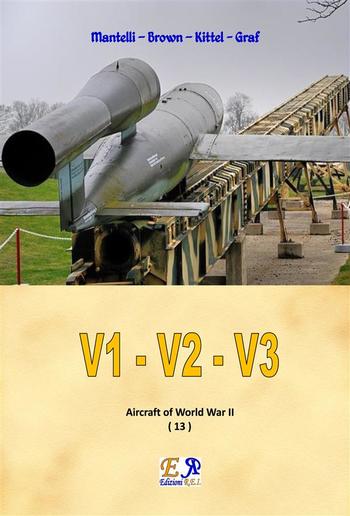
Mantelli - Brown - Kittel - Graf - The V1 - The V2 - The V3
The V1 - The V2 - The V3
Mantelli - Brown - Kittel - Graf
Description
The three main "secret weapons" with which the Germans tried to revive their fortunes at the end of World War II.The V1, whose official theme was Fi103, named after the first manufacturer, the Fieseler AG Kassel, was a flying bomb Luftwaffe, namely a small unmanned aircraft powered by a Pulsejet placed above the fuselage and launched by a rocket in hydrogen peroxide on a direct rail inclined towards the objective.The V2, whose official theme was A4 (Aggregat 4), was a single-stage liquid propellant missile, 14 meters high mass 12 tons, with a payload of nearly a ton of high explosive, suborbital trajectory, range of about 300 km, equipped with remote control and gyroscopic guidance. His project can be traced back to 1932; building in series began in 1943 and until the end of the war were built 5789 specimens; the use in war began on September 8, 1944, with the bombing of London.The V3 was a great gun range (200 km) with a rod of the caliber of about 10 cm long and 120 meters, encased in a reinforced concrete structure; the principle of operation was based on turning on the next charge of launch regularly arranged along the barrel, in the side chambers. The project, disguised under the name of Hochdruckpumpe ("high pressure pump"), reached the operational phase in May 1943, when it began the construction of a large battery to Mimoyecques underground, on the French coast of the English Channel, 150 km from London ; battery included two sets of 25 reeds, oriented to hit the British capital at the rate of one per minute saves.

